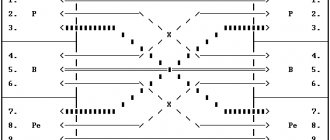- What is a crisis?
- What can cause a crisis?
- Types of crisis conditions
- The reaction of the human psyche to a stressful situation
- Goals and objectives of crisis psychology
The science of crisis psychology (psychology of crisis states) owes its emergence to the enormous number of disasters that arise in our reality. These are epidemics, terrorist attacks, man-made disasters, military operations, accidents and other difficult situations. A person, one way or another, is involved in all these incidents as an initiator, victim or witness, and the psychology of crisis situations teaches him to cope with dangerous emotional consequences. Let's talk in more detail about this direction, its goals and objectives.
What is a crisis?
Crisis psychology studies personal and social crises arising from external or internal shocks.
A crisis is a violation of a stable mental balance; it occurs when the usual ways out of this state do not help, and a person is forced to look for a new way to cope with the situation or adapt to it. A crisis is a consequence of a strong emotional shock; it changes thoughts and behavior, which can either worsen a person’s psychological indicators or, on the contrary, allow him to reach a higher level of development.
In simple words, a crisis state is a period in which the old foundations of life are destroyed, and new ones have not yet been found. That is why it is very important to provide qualified assistance to a person experiencing a crisis.
What can cause a crisis?
Crisis states arise for various circumstances and reasons. These may be social and situational factors, individual and psychological characteristics of the individual.
Children, adolescents and the elderly are predisposed to a crisis; these age phases are characterized by biological vulnerability and any difficult situation in life during this period can disrupt a person’s emotional state.
The risk group will also include somatic patients, people with diagnosed physical exhaustion or those with psychological trauma.
The causes of stress disorder can be:
- violence and cruelty;
- participation in hostilities;
- terror;
- crime;
- disaster;
- death or illness of loved ones;
- loss of work and/or social status (livelihood);
- significant decline in living standards;
- social conflict (in the family or at work).
The psychological state is as important as the physical one. This is the basis for satisfaction with life and yourself.
Such health shows the personality in general. It intersects with the sphere of motivations and emotions.
Psychological health criteria
The main criteria for psychological health include:
- adequacy of understanding of society;
- awareness of actions;
- performance and activity;
- striving for new goals;
- ability to find contacts;
- normal family life;
- feeling of attachment to family;
- responsibility;
- the ability to draw up a life plan and follow it;
- focus on personal development;
- integrity.
And sociopathy, psychopathy, neuroticism - all this is beyond the limits of such health. Deviations include individuals with the main set of internal problems:
- alcoholism;
- aggression;
- depressive states;
- sick attachments;
- victim position;
- fears, psychotraumas.
These are people with constant feelings of guilt. A person with psychological problems is not distinguished by prudence, he is hostile, and is unable to protect himself from life’s blows.
Mental and psychological health. Main differences
We rarely think about what the word “health” means. For some, it is the absence of body diseases or terrible diseases. But this concept includes not only excellent health or physical condition, but also emotional and psychological well-being. This is a type of interaction with the outside world in which a person feels happiness and satisfaction. This is harmony inside and outside, a balance that gives a chance to live normally. It is important to distinguish psychological health from mental well-being.
Mental health is the stability of the psyche, which allows the individual to remain adequate in society. Inappropriate behavior indicates illness and mental disorders. In other words, psychological and mental state are different concepts that are not complemented by one another. With an absolutely healthy psyche, people feel internal long-term discomfort, apathy, hostility, and depression. But cheerful people who are always in a great mood are sometimes mentally abnormal.
Mental and psychological health are two non-overlapping conditions. It is important to differentiate between them and recognize the differences.
So, psychological health is the well-being of the individual, adaptability, and a tendency to act rather than worry. This also includes an excellent mood, acceptance of oneself and others, creativity, responsibility, independence, etc. On the other hand, there are destructive manifestations of personality that interfere with pleasant emotions; they make a person feel general dissatisfaction, resentment, and guilt.
If a person is psychologically unhealthy, then he acts according to familiar patterns, does not want to change something, and incorrectly perceives failures and successes.
But one should not assume that psychological well-being and positive character traits are the same thing, since the norms for positive traits in societies around the world differ. This is not an example of an ideal personality, but a desire for oneself and for others. A psychologically healthy person understands what is happening to him and feels integrity. It turns out that such a person does not consider others a threat to himself.
Psychological health according to Maslow
According to Maslow's theory, psychological health does not simply fill the individual with a subjective sense of well-being, but is true in itself. In this sense, it is above the disease. It is not just better, it is true, because a healthy person can see more of the truth. The lack of such health not only depresses the individual, it is a kind of blindness, a pathology of thought.
There are few completely healthy people, but they do exist. If a person desires this, tries to achieve absolute health, then this is a real goal. It is better to live in a healthy, adequate, trusting society than in hostility and inadequacy. This is important for each of us. It is necessary to strive to comprehend psychological health, balance of spirit and body.
The fact that people are healthy and that they exist (albeit in small numbers) inspires faith and hope, the desire to strive for more, to grow as a person. Such faith in the capabilities of the human soul and nature pushes us to build a healthy society.
The desire for absolute health of soul and body is a normal phenomenon for a harmonious personality. Special techniques will help achieve this goal.
Just as we look after our own body, it is important to look after our mental state. In order to achieve physical health, we adhere to a healthy lifestyle, play sports, watch our diet, etc. To achieve health in a psychological sense, it will take work and work. This is self-understanding, self-education, the ability to make decisions, and identify other options for action. This is a readiness for something new, an effective use of one’s own resources.
Of course, in order to go in the right direction and develop, you first need to know your own personality, your own weaknesses, and resources. Special techniques that are aimed at studying personality, intelligence, and character help with this. All this will help build life prospects, rules that promote personal growth, help you realize your own capabilities and really evaluate your achievements.
Types of crisis conditions
Depending on the severity of the experienced event and the nature of the stress, we can say that there are three levels of the crisis state:
- routine - as a rule, a person copes with such an attack on his own;
- acute – requires immediate psychotherapeutic assistance;
- significant (personal) – characterized by the loss of basic life guidelines and values.
A state of personal crisis may be caused by internal aspects of life
(natural personality development, age, inadequate self-esteem, etc.) or
external events
(work activity, change in social status or marital status, extreme situations associated with a threat to life and/or health).
In more detail, the types of crisis that people most often encounter are the following:
- age crisis - occurs in the process of personality maturation and its transition from one age stage to another and is associated with corresponding psychological changes;
- loss crisis - a picture of acute grief that occurs when losing a loved one and is perceived as a partial loss of oneself;
- existential crisis - as a consequence of the loss of the meaning of life, the most important values, tasks and goals; getting out of this state involves revising your system of psychological beliefs and stabilizing your idea of your personality and the world around you;
- neurotic crisis - can develop regardless of external events, but at the same time create an illusory subjective feeling of hopelessness of the situation and worldview;
- traumatic crisis - as a response to a traumatic event, the strength of the experience will depend on the individual assessment and significance of the event for a particular person.
Lecture No. 6. Mental states
The beginning of the scientific development of the concept of mental state in Russian psychology was laid by an article by N. D. Levitov, written in 1955. He also wrote the first scientific work on this issue - the monograph “On the Mental States of Man,” published in 1964.
According to Levitov's definition, the mental state
- this is a holistic characteristic of mental activity over a certain period of time, showing the uniqueness of the course of mental processes depending on the reflected objects and phenomena of reality, the previous state and mental properties of the individual.
Mental states, like other phenomena of mental life, have their own cause, which most often lies in the influence of the external environment. Essentially, any state is a product of the subject’s inclusion in some kind of activity, during which it is formed and actively transformed, while exerting a mutual influence on the success of this activity.
Continuously changing mental states accompany the course of all mental processes and types of human activity.
If we consider mental phenomena in terms of such characteristics as “situational - long-term” and “variability - constancy,” we can say that mental states occupy an intermediate position between mental processes and mental properties of the individual. There is a close relationship between these three types of mental phenomena and mutual transition is possible. It has been established that mental processes (such as attention, emotions, etc.) under certain conditions can be considered as states, and frequently repeated states (for example, anxiety, curiosity, etc.) contribute to the development of corresponding stable personality traits.
Based on modern research, it can be argued that non-innate human properties are a static form of manifestation of certain mental states or their combinations. Mental properties are the long-term basis that determines the activity of the individual. However, the success and characteristics of an activity are greatly influenced by temporary, situational mental states of a person. Based on this, we can give the following definition of states: a mental state is a complex and diverse, relatively stable, but changing mental phenomenon that increases or decreases the activity and success of an individual’s life in a particular situation.
Based on the above definitions, we can distinguish the properties
mental states.
Integrity
. This property is manifested in the fact that states express the relationship of all components of the psyche and characterize all mental activity as a whole over a given period of time.
Mobility
. Mental states are changeable over time and have dynamics of development, manifested in a change in stages: beginning, development, completion.
Relative stability
. The dynamics of mental states are expressed to a much lesser extent than the dynamics of mental processes (cognitive, volitional, emotional).
Polarity
. Each state has its own antipode. For example, interest - indifference, cheerfulness - lethargy, frustration - tolerance, etc.
The classification of mental states can be based on various criteria. The most common classification criteria are:
1. According to which mental processes predominate, states are divided into gnostic, emotional and volitional.
To the Gnostic
mental states usually include curiosity, curiosity, surprise, amazement, bewilderment, doubt, puzzlement, daydreaming, interest, concentration, etc.
Emotional
mental states: joy, grief, sadness, indignation, anger, resentment, satisfaction and dissatisfaction, cheerfulness, melancholy, doom, depression, depression, despair, fear, timidity, horror, attraction, passion, affect, etc.
Strong-willed
mental states: activity, passivity, decisiveness and indecisiveness, confidence and uncertainty, restraint and lack of restraint, absent-mindedness, calmness, etc.
2. The classification of conditions based on a systems approach is similar to the previous one, but has some differences. According to this classification, mental states are divided into volitional (resolution - tension), affective (pleasure - displeasure) and states of consciousness (sleep - activation). Volitional states are divided into practical and motivational; and affective - into humanitarian and emotional.
3. Classification based on relevance to personal substructures - division of states into states of the individual, states of the subject of activity, states of the individual and states of individuality.
4. According to the time of occurrence, short-term, protracted, and long-term conditions are distinguished.
5. By the nature of their influence on a person, mental states can be sthenic (states that activate life activity) and asthenic (states that suppress life activity), as well as positive and negative.
6. According to the degree of awareness - states are more conscious and less conscious.
7. Depending on the predominant influence of the individual or situation on the occurrence of mental states, personal and situational states are distinguished.
8. According to the degree of depth, states can be deep, less deep and superficial.
The study of the structure of mental states made it possible to identify five factors in the formation of states: mood, assessment of the likelihood of success, level of motivation, level of wakefulness (tonic component) and attitude to activity. These five factors are combined into three groups of states, different in their functions:
1) motivational and incentive (mood and motivation);
2) emotional-evaluative;
3) activation-energy (level of wakefulness).
The most important and meaningful is the motivational group of states. Their functions include conscious stimulation by the subject of his activity, the inclusion of volitional efforts for its implementation. Such states include interest, responsibility, concentration, etc. The function of the states of the second group is the initial, unconscious stage of formation of motivation for activity based on the emotional experience of needs, assessment of the attitude towards this activity, and upon its completion - assessment of the result, as well as forecasting the possible success or failure of the activity. The function of the states of the third group, which precede all other states, is awakening - the extinction of activity of both the psyche and the body as a whole. The awakening of activity is associated with the emergence of a need that requires satisfaction, the extinction of activity is associated with the satisfaction of a need or with fatigue.
From the entire vast space of human mental states, it is customary to distinguish three large groups: typically positive (sthenic) states, typically negative (asthenic) states and specific states.
Typical positive
mental states of a person can be divided into states related to everyday life, and states related to the leading type of human activity (for an adult, this is training or professional activity).
Typically positive states of everyday life are joy, happiness, love and many other states that have a strong positive connotation. In educational or professional activities, these are interest (in the subject being studied or the subject of work activity), creative inspiration, determination, etc. The state of interest creates motivation for the successful implementation of activities, which, in turn, leads to working on the subject with maximum activity, full dedication of strength, knowledge, full disclosure of abilities. The state of creative inspiration is a complex complex of intellectual and emotional components. It enhances concentration on the subject of activity, increases the activity of the subject, sharpens perception, enhances imagination, and stimulates productive (creative) thinking. Decisiveness in this context is understood as a state of readiness to make a decision and carry it out. But this is in no way haste or thoughtlessness, but, on the contrary, balance, readiness to mobilize higher mental functions, actualize life and professional experience.
To typically negative
mental states include both states that are polar to typically positive ones (grief, hatred, indecision) and special forms of states. The latter include stress, frustration, and tension.
The concept of stress was discussed in detail in the lecture on the emotional sphere of the psyche. But if there the emphasis was on emotional stress, then in this context stress is understood as a reaction to any extreme negative impact. Strictly speaking, stress can be not only negative, but also positive - a state caused by a powerful positive impact is similar in its manifestations to negative stress. For example, the state of a mother who finds out that her son, who was considered dead in the war, is in fact alive, is positive stress. Psychologist G. Selye, a researcher of stress conditions, proposed calling positive stress eustress, and negative stress distress. However, in modern psychological literature, the term “stress”, without specifying its modality, is used to denote negative stress.
Frustration is a condition close to stress, but it is a milder and more specific form of it. The specificity of frustration lies in the fact that it is a reaction only to a special kind of situation. In general, we can say that these are situations of “deceived expectations” (hence the name). Frustration is the experience of negative emotional states when, on the way to satisfying a need, the subject encounters unexpected obstacles that can be more or less eliminated. For example, on a hot summer day, a person returning home wants to take a cool, refreshing shower. But an unpleasant surprise awaits him - the water will be turned off for the next 24 hours. The condition that occurs in a person cannot be called stress, since the situation does not pose a threat to life and health. But a very strong need remained unsatisfied. This is the state of frustration. Typical reactions to the influence of frustrators (factors that cause a state of frustration) are aggression, fixation, retreat and replacement, autism, depression, etc.
Mental tension is another typically negative condition. It arises as a reaction to a personally difficult situation. Such situations can be caused by each individually or by a combination of the following factors.
1. A person does not have enough information to develop an optimal model of behavior or make a decision (for example, a young man loves a girl, but knows her too little to predict her reaction to his attempts at courtship or explanation, so when meeting her he will experience state of tension).
2. A person performs complex activities at the limit of concentration and maximally updating his abilities (for example, a state of vigilance, the solution of an intellectual problem, complex motor-motor actions are simultaneously required - the situation of performing a combat mission).
3. A person is in a situation that causes conflicting emotions (for example, the desire to help the victim, the fear of harming him and the reluctance to take responsibility for someone else’s life - this complex set of emotions causes a state of tension).
Perseveration and rigidity are two similar negative mental states. The essence of both conditions is a tendency to stereotypical behavior, reduced adaptation to changes in the situation. The differences are that perseveration is a passive state, close to habit, pliable, stereotypical, and rigidity is a more active state, close to stubbornness, unyielding, resistant. Rigidity characterizes a personal position to a greater extent than perseveration; it shows a person’s unproductive attitude towards any changes.
The third group is specific mental states
. These include sleep-wake states, altered states of consciousness, etc.
Wakefulness is a state of active interaction between a person and the world around him. There are three levels of wakefulness: quiet wakefulness, active wakefulness, and extreme levels of tension. Sleep is a natural state of complete rest, when a person’s consciousness is cut off from the physical and social environment and his reactions to external stimuli are minimized.
Suggestive states refer to altered states of consciousness. They can be both harmful and beneficial for human life and behavior, depending on the content of the suggested material. Suggestive states are divided into heterosuggestive (hypnosis and suggestion) and autosuggestive (self-hypnosis).
Heterosuggestion is the suggestion by one person (or social community) of certain information, states, behavior patterns, and other things to another person (community) in conditions of reduced awareness of the subject of suggestion. The influence of television advertising on people is a suggestion emanating from one community and affecting another community of people. A state of reduced awareness is achieved by the very structure of commercials, as well as by “wedging” advertising at such moments of television films or programs when the audience’s interest is heightened and the criticality of perception is reduced. Directed suggestion from one person to another occurs during hypnosis, when the subject of suggestion is immersed in hypnotic sleep - a special, artificially induced type of sleep in which one focus of excitation remains, reacting only to the voice of the suggestor.
Self-hypnosis can be voluntary and involuntary. Voluntary - a person’s conscious suggestion to himself of certain attitudes or states. Methods of self-regulation and state management have been built on the basis of self-hypnosis, such as auto-training by G. Schultz, the affirmation technique (mainly associated with the name of Louise Hay, the most famous popularizer of this technique), and the original method of moods developed by G. N. Sytin. Involuntary self-suggestion occurs as a result of fixation of repeated reactions to a certain stimulus - an object, situation, etc.
Altered states of consciousness also include trance and meditation.
Euphoria and dysphoria are two more specific conditions. They are opposites of each other.
Euphoria is a state of increased gaiety, joy, complacency, and carelessness that is not justified by objective reasons. It can be either the result of exposure to psychotropic drugs or narcotic substances, or a natural reaction of the body to any internal mental factors.
For example, prolonged exposure to extreme stress can cause a paradoxical reaction in the form of euphoria. Dysphoria, on the contrary, manifests itself in an unreasonably low mood with irritability, anger, gloominess, increased sensitivity to the behavior of others, and a tendency to aggression. Dysphoria is most characteristic of organic diseases of the brain, epilepsy and some forms of psychopathy.
To summarize, we can say that in their structure, mental states are complex formations that differ in sign (positive - negative), subject orientation, duration, intensity, stability and at the same time manifest themselves in the cognitive, emotional and volitional spheres of the psyche.
Diagnostics
mental states are carried out at two levels: psychophysiological and actually psychological. Psychophysiological studies reveal the structure, pattern of flow, intensity of states and some other factors that make it possible to reveal their nature. The study of the dynamics of the content of mental states, i.e., what subsequently makes it possible to manage states and correct them, is carried out using psychological methods. One of the most common psychodiagnostic methods are questionnaires. Among the most popular, for example, is the SAN questionnaire, aimed at diagnosing well-being, activity and mood. It is built on the principle of a Likert scale and contains 30 pairs of statements relating to mental states (10 for each scale). The technique developed by C. D. Spielberger and adapted by Yu. L. Khanin is also often used. It is used to diagnose personal anxiety and reactive anxiety. The latter acts as a mental state. You can also indicate the “Questionnaire of Neuropsychic Tension” by T. A. Nemchin.
Of the projective techniques for diagnosing mental states, the Luscher color test is often used: preference for blue color means affiliation motive (goodwill - hostility), preference for green - motive for self-affirmation (dominance - submission), preference for red - search for sensations (excitement - boredom), yellow - motive constructive self-expression (reactivity - inhibition).
Among other methods for diagnosing mental states, one can highlight the method of expert visual determination of the emotional state by facial expressions, automated diagnosis of emotional reactivity based on preference for color or shape in the structure of a mental image, diagnosis of emotional tension based on speech characteristics, etc.
The reaction of the human psyche to a stressful situation
You need to understand that negative sensations and experiences during periods of stress are natural reactions of the human body. They must manifest themselves so that a person can subsequently avoid health complications.
It is normal if a person is stressed:
- is in an excited state, experiences chaos in thoughts and may demonstrate atypical behavior;
- panics, is afraid, feels an irresistible desire to run away;
- aggressive, furious, tense;
- anxious, restless;
- cries;
- experiences envy, jealousy;
- feels uncontrollable nervous trembling (tremor).
The level of stress does not depend on the cause. A broken leg or a sudden betrayal of a spouse will give the same reaction from the body, but the intensity of these reactions will be related to how significant the event is for a particular individual.
If stressful manifestations last for a long time, then a feeling of indifference comes, a person may feel a lack of strength, lose interest in what happened and, as a result, fall into apathy.
Mental and psychological health of a person and personality
Nekhvedovich Oksana Olegovna, psychologist of the health care institution “City Clinical Psychiatric Dispensary”
What does a healthy person look like? A ruddy face, a clear look, a confident gait and energetic movements, “the absence of various kinds of diseases,” “high adaptability of the body,” “the ability to be in working condition for a long time.” However, when discussing human health, talking only about the physical component will not be entirely correct, since in this case the picture will be incomplete and limited. A psychologically healthy person can only be considered one who acts rationally, willingly makes contact, is ready to cooperate, knows how to emotionally protect himself from life’s blows, and has the necessary psychological tools to cope with life’s problems and failures.
One of the main functions of health in the psychological sphere is considered to be the balance between a person’s personality and the environment in which he exists. Moreover, the balance is dynamic and active. It should not be assumed that the healthier a person is psychologically, the more he is in a state of constant unbridled optimism. The readiness to communicate if necessary, inherent in the psychological health of an individual, is not at all identical to the innate ability to maintain numerous contacts, including unnecessary ones.
It is believed that mental and psychological health is the optimal functioning of all mental structures used by a person in everyday life.
How can you describe a person who is psychologically healthy?
- One of the criteria for psychological health is a feeling of attachment to loved ones and responsibility for them;
- In a family, such a person receives a large amount of positive emotions, knows how to extinguish conflicts, preventing them from escalating;
- He solves life's problems without unnecessary emotions, without making a scandal or showing aggression;
- Soberly assesses situations and draws reasonable and balanced conclusions from them;
- He is well oriented in reality, adequately accepts it and uses it. Performs actions that correspond to the conditions and circumstances in which they should have been performed;
- Another criterion for a person’s psychological health is vital activity, the ability not only to determine meaningful goals for oneself, but also to translate them into reality. A healthy person is focused on self-development, self-realization and the implementation of his plans.
Image of a healthy person
- He is cheerful and friendly;
- open to the extent that the innate psychological type allows;
- capable of creativity;
- enjoys learning new things and is ready to learn both reality and his inner world. Everything new interests him keenly;
- he is not prone to envy; he rejoices in other people’s victories and successes no less than his own. Moreover, the successes of others stimulate him to achieve his own successes.
- There are no unsolvable problems for such a person. He sees before himself interesting problems that can and should be solved, and obstacles that make it possible to overcome them or get around them. The failure that happens to him is assessed only as a new opportunity to try again.
- He is completely confident that only he himself bears responsibility for his life, his successes and failures. His life is filled with harmony: there is everything in moderation, there are no distortions or gaping gaps.
Psychological health of the individual: how to set boundaries?
The boundaries are set very conditionally, and for the most part, subjectively.
A person who usually behaves quite normally may suddenly, under certain conditions, exhibit traits or actions that are characteristic of psychologically unhealthy individuals. Later, after circumstances change and the person regains psychological balance, such traits will become less pronounced, or will not be noticeable at all. So, if you notice signs of psychological ill-health, you should not consider such a person sick from now on. If this were so, psychologists would have long ago recorded all of humanity as unhealthy individuals.
Now it’s easier for us to imagine a person who is clearly psychologically unhealthy. It is enough just to change the “sign” of the signs of a person’s psychological health, and enter opposite statements in their place. Life activity, for example, should be replaced with passivity, the ability for self-development should be replaced with inability, and the confidence that a person is responsible for his own life should be removed completely, or transferred to someone else.
It's easy to imagine how the absence or lack of mental health will affect your life. What we get is an irresponsible person who is constantly trying to find those who are to blame for a series of failures and mistakes and then blaming them for it;
- family scandals and quarrels;
- gloominess and isolation;
- inability to make a coherent plan even for a short period.
- a feeling of envy of others whose lives are more successful;
- aggression;
- impulsive and inappropriate actions.
All this has a very negative effect on any area of human life. The result is disappointing: a broken family, failures in the professional sphere, frequent depression, the emergence and worsening of bad habits. What does all of the above indicate? That a person probably has neuroses and needs urgent medical and psychological help.
The good news is that neuroses in most cases are curable with strict adherence to doctors’ recommendations.
It is also worth thinking about the fact that psychologically healthy individuals are not some special ones, but ordinary people just like you and me. This knowledge can give us new faith in human capabilities, and at the same time hope for building a different society, in which brotherly love and compassion for our neighbors will be the main thing.
What is embedded in us by our genes?
Yes, a hereditary predisposition exists, and it has been fully proven. But its role is not as significant as the environment in which we exist now. And especially the one in which we existed and were raised while we were still children.
Thus, psychological health is an integral part of a person’s full life. A psychologically healthy person is intelligent, open to cooperation, protected from the blows of life and armed with the necessary tools to cope with life's challenges in a changing world, and is able to form positive personal forces that ensure a fulfilling life.
Therefore, if all of the listed psychological mechanisms are present in you and your loved ones, you have nothing to seriously worry about. On the other hand, if some points cause you disagreement or doubt about yourself, I recommend contacting a specialist.










